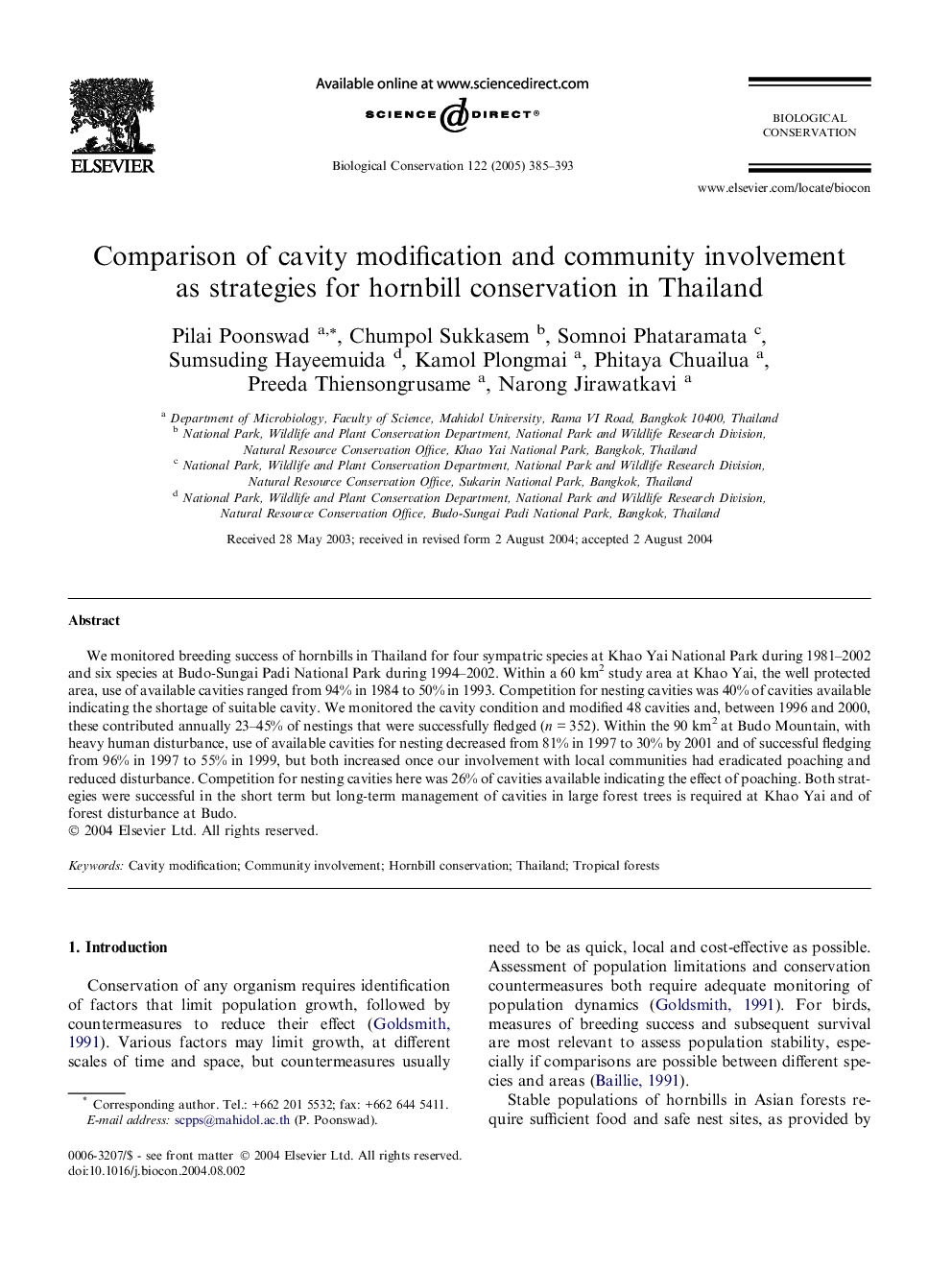| Article ID | Journal | Published Year | Pages | File Type |
|---|---|---|---|---|
| 9446211 | Biological Conservation | 2005 | 9 Pages |
Abstract
We monitored breeding success of hornbills in Thailand for four sympatric species at Khao Yai National Park during 1981-2002 and six species at Budo-Sungai Padi National Park during 1994-2002. Within a 60 km2 study area at Khao Yai, the well protected area, use of available cavities ranged from 94% in 1984 to 50% in 1993. Competition for nesting cavities was 40% of cavities available indicating the shortage of suitable cavity. We monitored the cavity condition and modified 48 cavities and, between 1996 and 2000, these contributed annually 23-45% of nestings that were successfully fledged (n = 352). Within the 90 km2 at Budo Mountain, with heavy human disturbance, use of available cavities for nesting decreased from 81% in 1997 to 30% by 2001 and of successful fledging from 96% in 1997 to 55% in 1999, but both increased once our involvement with local communities had eradicated poaching and reduced disturbance. Competition for nesting cavities here was 26% of cavities available indicating the effect of poaching. Both strategies were successful in the short term but long-term management of cavities in large forest trees is required at Khao Yai and of forest disturbance at Budo.
Related Topics
Life Sciences
Agricultural and Biological Sciences
Ecology, Evolution, Behavior and Systematics
Authors
Pilai Poonswad, Chumpol Sukkasem, Somnoi Phataramata, Sumsuding Hayeemuida, Kamol Plongmai, Phitaya Chuailua, Preeda Thiensongrusame, Narong Jirawatkavi,
